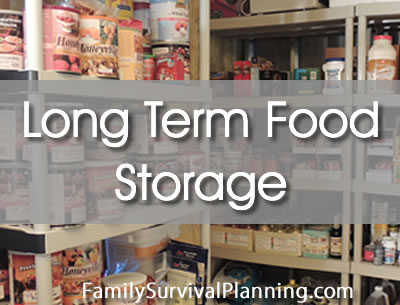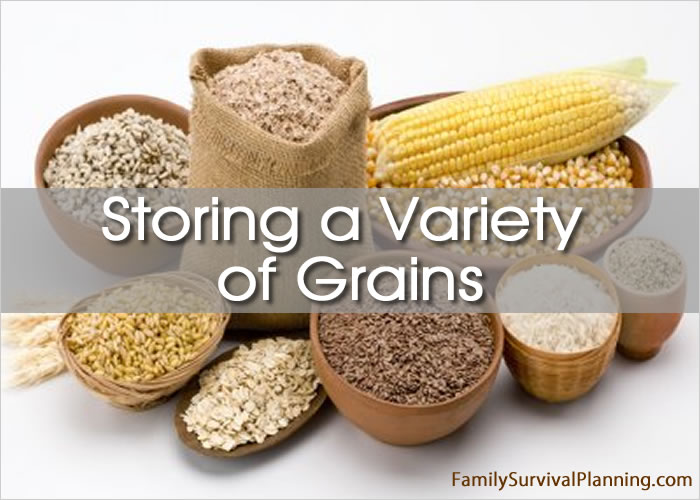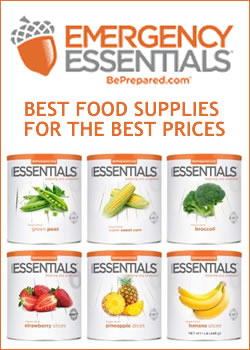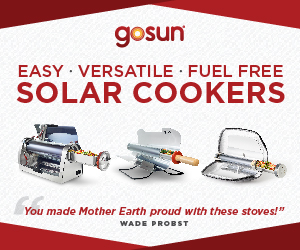- HOME
- Food Storage Basics
- Food Storage for Beginners
Food Storage For Beginners
How to Get Started on Food Storage
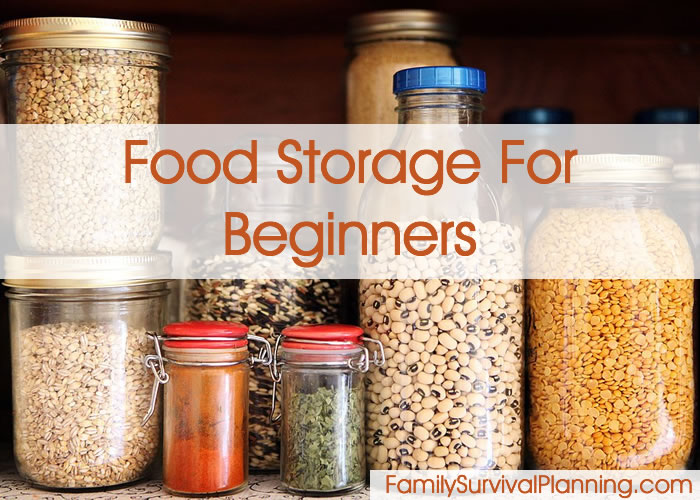
If you're in the "beginner" stage of food storage, it can all be overwhelming.
- Where do I start?
- What kinds of foods are best?
- Where do I find the best prices?
- How much do I need?
"Back in the day" more people lived on farms, which meant food storage was a way of life. You planted in the spring, tended the crops all summer, and preserved the food in the fall. They canned, dried, smoked meat, and stored root crops in root cellars. Many had chickens and cows. They did this to survive until the next planting season — not because they were being preppers.
Invest in emergency food storage now and enjoy peace of mind for the next 25 years. Don't miss out on the savings!
Today more families live in apartments in cities and suburban areas rather than farms. There are fewer local farms than in the past. If you're one of those "city" families, your space may be limited and your budget may be tight.
In the last half century, ordinary people have become fearful, thanks to terror attacks (or fear of future attacks), huge storms, faltering economies, unemployment, and global financial uncertainty. People are realizing they need to do something to become better prepared for the uncertainties we live with.
If that's you, you've come to the right place.
Where To Start
Start with food and water.
What type of food should you buy, where should you buy it, and how should you store it? Acquiring food for the preparedness pantry does not have to be overwhelming. Don't worry at first about long-term emergency food storage — that's something you can do a little at a time over weeks, months, or even longer, if that's what it takes.

On a tight budget?
Most of us are. But there are ways to squeeze a little here and there to begin your food storage. Yes, it might take a little sacrifice — like eating out less or eating out at a less expensive restaurant. Or brewing your own coffee instead of hitting Starbucks every morning on the way to work. (Consider these penny-pinching ideas.)
Method 1: Step-by-Step Plan to Fill Your Pantry
Follow this Step-by-Step Plan to Fill Your Pantry Using Only Your Grocery Budget. It's easy to follow and doesn't require a large output of dollars.
Method 2: Fool-Proof Method to get started:
This method will help you acquire at least a 3-month supply of easy-to-prepare food. The food you choose to stock up on should be what you're used to eating on a regular basis and what your family likes.
- Decide on several recipes that are easy for you to fix and that you and your family are willing to eat.
- Choose two breakfast meals, two lunch meals, and two dinner meals. Keep them simple.
- Then, stock up on all the ingredients it takes to make each of them seven times.
Once you have all the ingredients, you will have a food storage plan for two weeks!
For example: You might choose oatmeal and pancakes for your two breakfast meals, soup and tuna salad with canned fruit as your lunch meals. Dinner might be spaghetti with canned corn for one meal and homemade pizza for the second.
Now write down what ingredients you need for each meal.
- Breakfast One: Oatmeal - oats, milk (dry or evaporated), sugar, cinnamon, salt.
- Breakfast Two: Pancakes - pancake mix, or flour, baking powder, jam or syrup.
- Lunch One: Soup and canned fruit - soup (canned or dry mix), canned fruit.
- Lunch Two: Tuna Salad and crackers - tuna, pickles, mayonnaise, crackers.
- Dinner One: Spaghetti - pasta, spaghetti sauce (or ingredients to make sauce, or just canned spaghetti), hamburger (if you have a freezer), canned corn as side dish.
- Dinner Two: Pizza - packaged pizza mix (or flour, baking powder, etc.), can of pizza sauce, pepperoni, can of mushrooms, pineapple, or whatever you like on pizza.
You might also want to have some ingredients, mixes or packaged treats on hand. Old-fashioned non-microwave popcorn stores well and is a good option.
Repeat the Process
When you have stashed away all of the ingredients for these meals, choose two more each of breakfasts, lunches, and dinners, and repeat the process.
Repeat this until you feel satisfied that you'll be able to take care of yourself and your family for a while. You may want to learn how to cook your food when there is no electricity. Look for survival cooking suggestions here.
If you follow this process, you can be more prepared if an emergency occurs, even if you are not able to change your current lifestyle or circumstances. Set your goal for a 3-month food supply.
What to Buy?
The best place to begin your food purchases is the grocery store. In the beginning, there is no need to stock up on huge amounts of bulk foods. Work toward the goal of three month's supply of the foods your family likes.
Let's start with this list:
- Canned Fruits and Vegetables: A good variety of both fruits and vegetables are a good place to start. Let your family's preferences guide you. Remember, the more colorful the fruits and veggies, the more nutritional. Canned foods are very versatile. Veggies can be added to homemade soups, and fruits can be used to make desserts (or eat just fruit for dessert), as a snack, or top your cereal with fruit.
- Canned meats or meat based meals: Protein is so important for keeping our energy up and building muscles. Canned chicken, tuna, shrimp, salmon, beef stew, ham, Vienna sausages and yes, even Spam will give you a good variety of protein rich items that can be added to soups, rice, beans, and other food storage items.
- Canned Soups and Broths: Having a variety of canned soups should be a major goal. They are easy to prepare, can be a one-meal dinner, are filling, and cost very little. I usually end up adding a can of chicken or beef or more vegetables, just to make a more filling meal. Broths can be used in SO many recipes — buy plenty of chicken, beef, and even vegetable broth.
- Spaghetti Sauce: Sure, you can make your own spaghetti sauce, but having it handy on the shelf when you're in a hurry can save time and money. Put it on pasta, rice, or make up your own recipe by adding veggies, meat, and more spices.
- Rice: White or brown rice is a favorite to mix with any recipe. Its filling and adding a few seasonings along with some protein and vegetables can make a pretty complete meal. The choice of white rice or brown rice or a combination of the two is up to you. White rice has a longer shelf life but brown rice has more nutritional benefits.
- Dried Beans: Beans combined with rice makes a complete protein, as well as being very tasty. There is quite a variety of beans available, pinto, black, white, kidney, and others. They are filling and nutritious, as well as inexpensive.
- Pasta: I love pasta — don't you? I think everyone does. There are so many ways you can use it, as in soup, spaghetti, lasagna, and more. There is whole wheat pasta, spinach pasta, white pasta and comes in many shapes and sizes.
- Oats: Oats are very versatile. Eat them for breakfast as a hot cereal. Make your own granola by adding honey, nuts, and seeds. The are nutritional, high in fiber, gluten-free, and filling.
- Peanut Butter: Peanut butter is an excellent source of protein, antioxidants and heart healthy monounsaturated fats. Not only that, peanut butter supplies plenty of calories for energy. Besides, who can resist the taste of a gooey spoonful of luscious peanut butter? It is best to purchase "natural" peanut butter that is ground and packed with natural peanut oils. The reason for this is that peanut butter supplemented with canola or other oils is more likely to turn rancid in a short period of time.
- Powdered Milk: Not everyone likes drinking just plain fat free powdered milk, but it is easy to use in cooking and is a good source of protein, calcium and other nutrients. If the time comes when you need to just drink it, add a touch of sugar and vanilla and it will taste great.
- Oil: Oils can become rancid in a short time so choose carefully. Coconut oil has a longer shelf live than other oils, both refined and unrefined. Olive oil is a healthy choice but has a shorter shelf life and can become rancid sooner than coconut. But fats are important in our food storage because they give us energy, provide support for fat-soluble vitamins and nutrients, adds flavor and makes you feel satisfied when you are through with the meal.
- Salt: We cannot live without salt. It also adds flavor to foods that might otherwise be quite bland. It's very inexpensive.
- Sugars: I don't care what anyone says, we humans love sweet foods, and are a comfort to us in a crisis situation. Choices include honey, jam, preserves, maple syrup, brown sugar or plain old white sugar. None of the sugars are nutritionally healthy, with the exception of honey, but we do still love them. Honey has so many uses such as an anti-bacterial covering for wounds and is a powerful antioxidant.
- Pancake Mix: When purchasing pancake mix, be sure and buy the kind that does not include any oil or shortening — it could become rancid. Buy the one that you just add water. A big plate of pancakes are good for any meal and to some are a comfort food.
- Spices and Condiments: Having a supply of spices and condiments in your food storage pantry allows you to be creative when preparing maybe some very bland ingredients, like rice or pasta. Choose the ones you're familiar with or really like.
- Coffee, Tea and Cocoa: If coffee or tea are essential to your way of life, be sure and stock up. If you have a grinder, buy beans; otherwise buy ground or instant. Whatever is your preference. I consider coffee a comfort food and can't even think of starting my day without it. But a hot cup of cocoa on a cold winter evening is heaven! Buy the just-add-water kind and add your own milk or cream if you prefer.
- Comfort Foods: Comfort foods are whatever kind of food makes you feel like you're not deprived or that you're splurging just a bit. It could be anything from popcorn, corn chips and beer, to fresh baked brownies. In a tense situation or a crisis, comfort foods help your mind to "feel" more normal. This is especially true for children. So stock what your family loves.
- Treats: I have a relative who is not happy unless she has her treats. We all have our favorites whether it's Dr. Pepper and Peeps, or nuts and a Hershey bar. Treats are also a comfort food and a necessary item in my food storage.
Should You Buy Freeze Dried or Dehydrated Foods?
Yes, and no. To qualify that, concentrate on the items mentioned above until you have a good supply of everything.
Freeze dried and dehydrated foods from a preparedness store are definitely handy because they are so easy to prepare. And I don't see anything wrong with buying a few here and there at the same time you are gathering your canned and staple pantry foods.
If you are a young or older single person, or just a couple, bulk storage of rice, beans or wheat may not work for you. However, you may choose to take advantage these long term storage foods. A #10 can of freeze dried food will last several months once it's opened.

Most companies now carry small cans of freeze dried or dehydrated foods (about 1/4 the size of #10 cans), and pouches that have 8-10 servings. Most have the same long shelf life (25 years), and nearly as many of the same food choices as the bigger cans, such as fruits, vegetables, entrees, spices, butter, eggs, cheeses, hot cocoa, soups, and more.
Several preparedness stores have, what they call, "pantry cans" that are smaller than #10 cans. They come with pantry items such as cinnamon, garlic powder, onion powder, chili powder, flour, powdered milk, chicken and beef bouillon, baking powder, and others.
You can find pouches at Emergency Essentials, and Valley Food Storage (all their foods come in pouches with 8-10 servings).
Whatever you choose, the bottom line is to stock what your family likes to eat.


